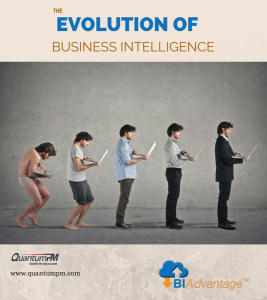 Ah, the good-old eighties. The decade that gave us Tom Cruise dancing in his underwear, power ballads by Journey, and the emergence of the data warehouse. That’s right, the data warehouse! More than 30 years ago, the birth of the data warehouse allowed business leaders to adopt a set of techniques and technologies aimed at transforming raw data into meaningful information, a process which is commonly known today as business intelligence (BI). Thanks to these warehouses, batches of operational data could be copied to a centralized pool of data designed to facilitate access and analysis. Queries could be run on the stored data without affecting the live data. Fast forward a few years and by the early 1990s online query and reporting tools resembled modern spreadsheets, which made BI accessible to business managers for the first time.
Ah, the good-old eighties. The decade that gave us Tom Cruise dancing in his underwear, power ballads by Journey, and the emergence of the data warehouse. That’s right, the data warehouse! More than 30 years ago, the birth of the data warehouse allowed business leaders to adopt a set of techniques and technologies aimed at transforming raw data into meaningful information, a process which is commonly known today as business intelligence (BI). Thanks to these warehouses, batches of operational data could be copied to a centralized pool of data designed to facilitate access and analysis. Queries could be run on the stored data without affecting the live data. Fast forward a few years and by the early 1990s online query and reporting tools resembled modern spreadsheets, which made BI accessible to business managers for the first time.
Perhaps most problematic in developing the data warehouse has been maintaining data quality. Because the source data can come from a wide range of Enterprise Resource Planning (ERP) software and other legacy systems, inconsistencies are inevitable. Over time, poor data quality can erode managers’ confidence in the analysis, or worse, lead to faulty decision-making.
Corporate-wide data warehouses were followed by department-specific data marts, which further accelerated the process of getting information to managers for the purpose of better decision-making. Soon non-technical business leaders wanted to be able to drill-down to learn more, conducting their own analysis. This form of business analytics depended on an internal IT resource who possessed a deep knowledge of the business, allowing him to anticipate his co-workers’ most frequently asked questions. Cubes or data tables were then developed to allow click through-analysis along pre-determined lines of inquiry.
The development of Online Analytical Processing (OLAP) cubes provided the next foundational shift in the evolution of BI. These allowed managers to slice-and-dice a subset of data in a cube from lots of different angles. OLAP cubes offered the promise of identifying hidden data relationships and correlations, revealing previously veiled insights and actionable intelligence.
Soon after, software companies saw a burgeoning new market. They began offering packaged business analytic applications targeted at particular user groups. Although these applications are often called BI applications, the range of data assessed is usually narrower than true BI. Rather than working from company-wide data in a data warehouse, these off-the-shelf apps usually bundle an OLAP cube with a BI reporting tool and a dashboard.
These applications are typically deployed as a tactical solution to a specific problem. Users often selected a tool without consulting IT or Finance, thus creating a new silo of information. Ownership for some has resided with data analysts or IT techs, while others have been acquired independently by users for their department’s use.
Data Integration Proves Troublesome
As BI has evolved, the greatest challenge has been how to integrate data from different systems accumulated over many years. Traditionally, data flowed from source systems to data warehouses and then to data marts to be used for BI purposes. Moreover, source data can also come from customer-facing applications, suppliers, and other external sources.
The solution to this data-integration dilemma may lie in BIAdvantage, QuantumPM’s newly launched business intelligence software for corporate leaders seeking a business-rules driven, yet easily customized and affordable BI solution.
According to our CEO, Rose Blackburn, the biggest benefit of BIAdvantage is that CEOs and other executives can gain a competitive edge knowing that their decisions are based on the most accurate data available. “They no longer need to fear making the wrong decision because of faulty data or human data-entry errors,” Rose said. “Because BIAdvantage automatically extracts pertinent information directly from the source-of-record, accuracy and timeliness are assured.“
BIAdvantage is a cloud-based Software-as-a-Service (SaaS) solution. Its easily customizable rules engine lets users measure and monitor the data that is critical to making important business decisions within their unique organization. Because BIAdvantage users can capture accurate organizational information in a single BI platform, they gain a better understanding of key business indicators. This creates a nimble organization that is able to respond to an ever-changing market place.
As a SaaS offering, BIAdvantage runs on the Microsoft Azure Cloud. The software’s unique architecture allows it to extract data from a system, analyze it, and combine it with data from other systems. As an example, BIAdvantage can take data from Project Online or SharePoint Online, combine it with Salesforce data, and perform automated data analyses in a secure cloud.
The resulting output can be delivered in various customer-specified formats such as PowerPoint slide decks, multi-page Word documents, and custom dashboards, giving users an “anyway you want it, that’s the way you need it” BI solution.




